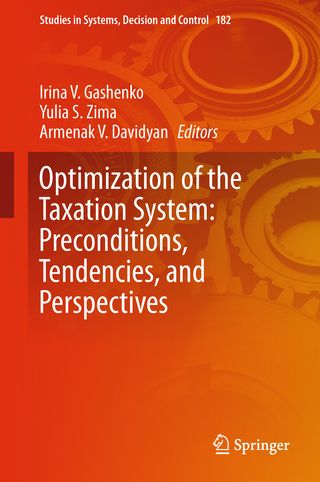?
Optimization of the Taxation System: Preconditions, Tendencies and Perspectives
This book addresses the optimization of taxation systems, a topic currently being explored by scholars all over the world. It puts forward a critical opinion on the problem and offers an original approach to solving it – through informatization.
The target audience of the book includes not only scholars and experts who professionally deal with taxation optimization issues, but also representatives of public authorities, and the general public. The book offers sound and practical solutions for the informatization-based optimization of taxation systems, and its conclusions and recommendations could be used in the management of tax systems for modern economic systems and in taxation optimization for specific economic subjects – individuals and organizations alike – , ensuring a broad range of practical applications.
